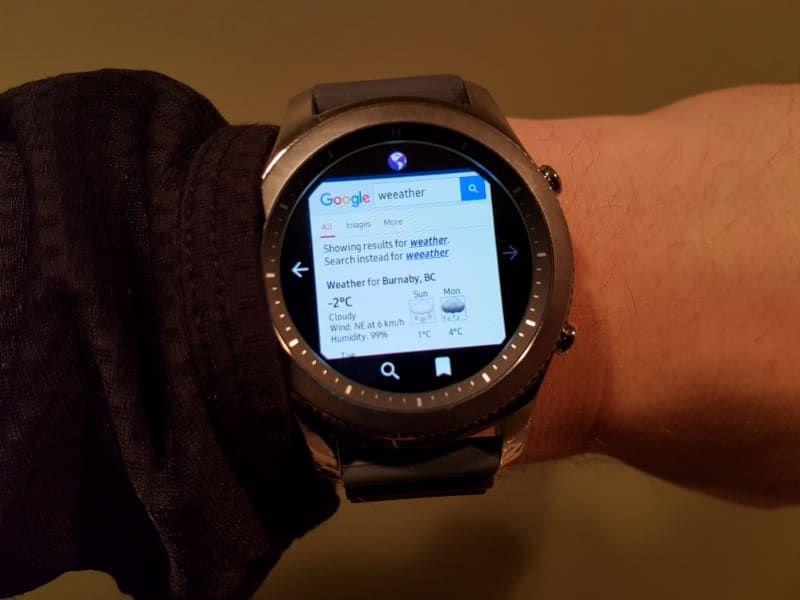Getting a tattoo is a lifelong commitment and the decision should not be taken lightly. Choosing the type of tattoo you want is largely up to your own preferences, special meaning behind the tattoo, and available space on your body to make the tattoo fit and look great.
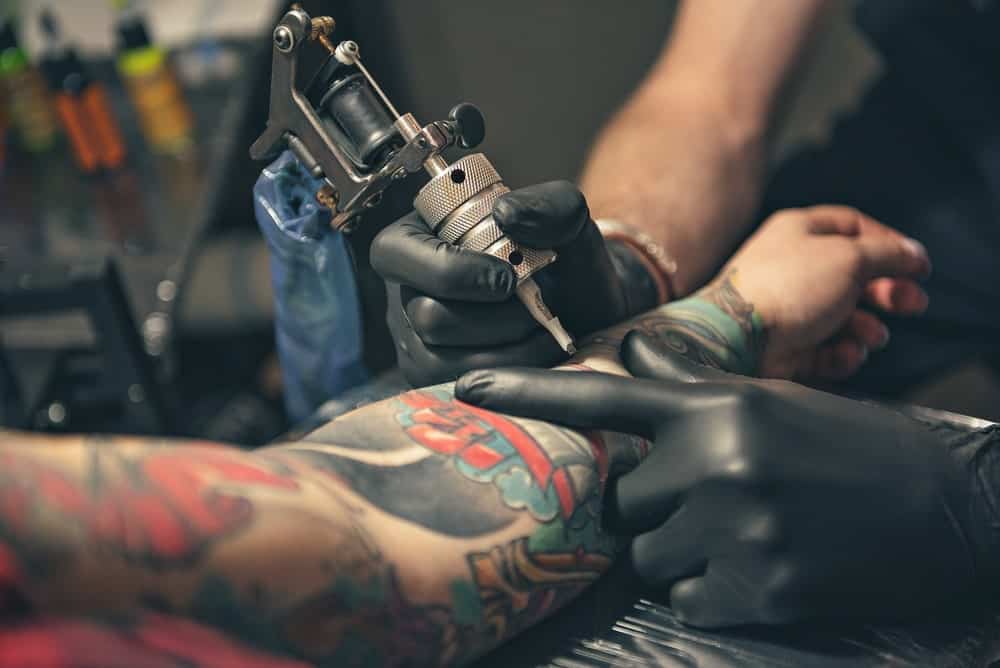
Whether you want a tattoo to express your personality better or want a tattoo to help memorialize a moment or family member, tattoos are a great idea for any person. Regardless of age, gender, or occupation, tattoos are commonly found in everyday life.
And, just like artwork, tattoos come in a range of styles and designs that feature different elements that help include societal and cultural influences. Below, let’s look at several tattoo styles, understand how they differ, and how they can best be applied to different body parts.
Contents
Types of Tattoos
Traditional Tattoo
One of the most popular tattoo types is a traditional tattoo, which is sometimes also called an American traditional tattoo. These tattoos have slowly developed over time, creating a rather natural and organic development.
The traditional tattoo design originally became popular in the 1930s as a way for people to rebel against the confines and restrictions of normal, everyday life. Since then, traditional tattoos and Americana style have included major cultural and societal changes and influences in their design and meaning.
The main attraction for many people to get this type of tattoo art is how symbolism and meaning are conveyed in such a small image. Traditional tattoo styles are centered on a larger meaning for a seemingly rather small image.
These tattoos can be intended for dedications to those they love, a “you only live once” mentality, or a reminder to always return home to your roots. The tattoo design and the placement and juxtaposition with other existing tattoos can help convey the overall meaning and message of the traditional tattoo.

In the 1930s and beyond, several Americans were setting sail and joining the Navy as the world entered a prolonged conflict. It is no wonder that many of the traditional tattoo styles are centered around nautical themes for sailing.
It is quite common to see ships, sharks, mermaids, and swallows as common American traditional tattoo art. Like other tattoos in this genre, many nautical themes carry their own meaning and symbolism.
One aspect of this type of tattoo that really sets it apart from other tattoos is its coloration. These tattoos have heavy black lines and outlines that help build the tattoo’s shape and outline. The tattoos are often bold and almost cartoonish. The colors used are red, blue, green, and yellow. These big, bold tattoos are simple, clear, and easy to see. When getting a traditional American tattoo, outline, style, and color play a major role in the authenticity of the style and design.
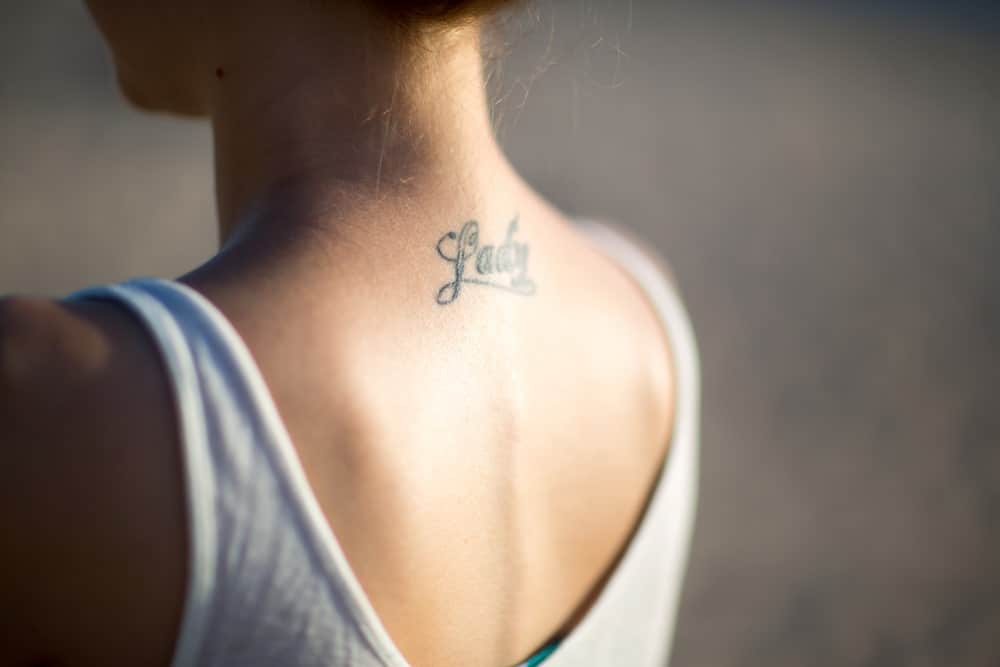
Most commonly, the traditional tattoo style is small, measuring only a few inches. In the 1930s, tattoos were intended as small messages to convey one’s story or intention. Today, the tradition still continues to carry small tattoos, but many people have adapted this traditional style to include larger pieces.
The small tattoos can be combined, creating a larger image. It is very common to have an entire arm or leg tattooed in this style, creating a sleeve of various images pieced together to tell a larger story.
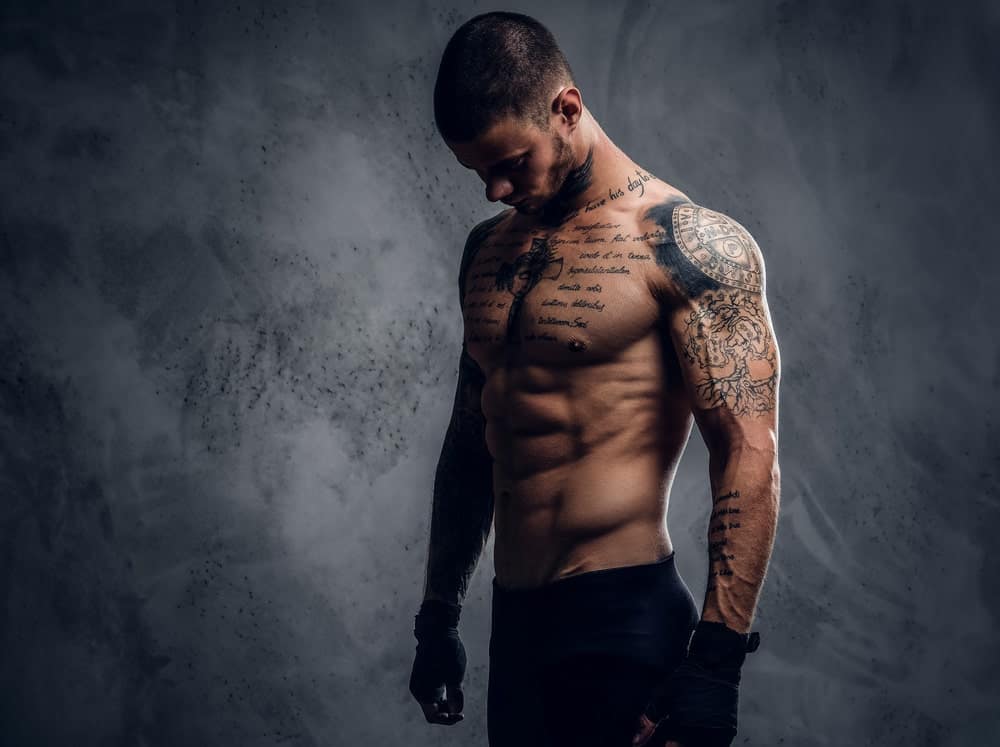
The traditional style tattoo is something that is commonly seen in tattoo parlors. This is because the idea of a flash tattoo gradually came into popularity. Popular tattoo artists would offer their images and tattoos to the general population, allowing customers to choose the tattoo design they wanted.
The tattoo designs and artwork were intended to be displayed on the ceilings and walls of a tattoo parlor, making selection easier. This tattoo style is perfect for a flash tattoo, or quick tattoo, because of the simple lines and bold color and the general and global meanings associated with different styles and designs.
Geometric Tattoo
One of the more popular trends currently in tattoo style is a geometric tattoo. Technically speaking, a dotwork tattoo is a type of geometric tattoo style. While this trend has recently emerged on the scene, the concept of using geometric lines and shapes to create an image is nothing new.
Ancient religions and histories have long used geometric designs to help convey thoughts, ideas, and stories. Ancient geometry and symbolism are quite famous and have even extended into the tattoo world by using the famous Gordian Knot. This is a common tattoo image that has been repeated in different forms over recent years.
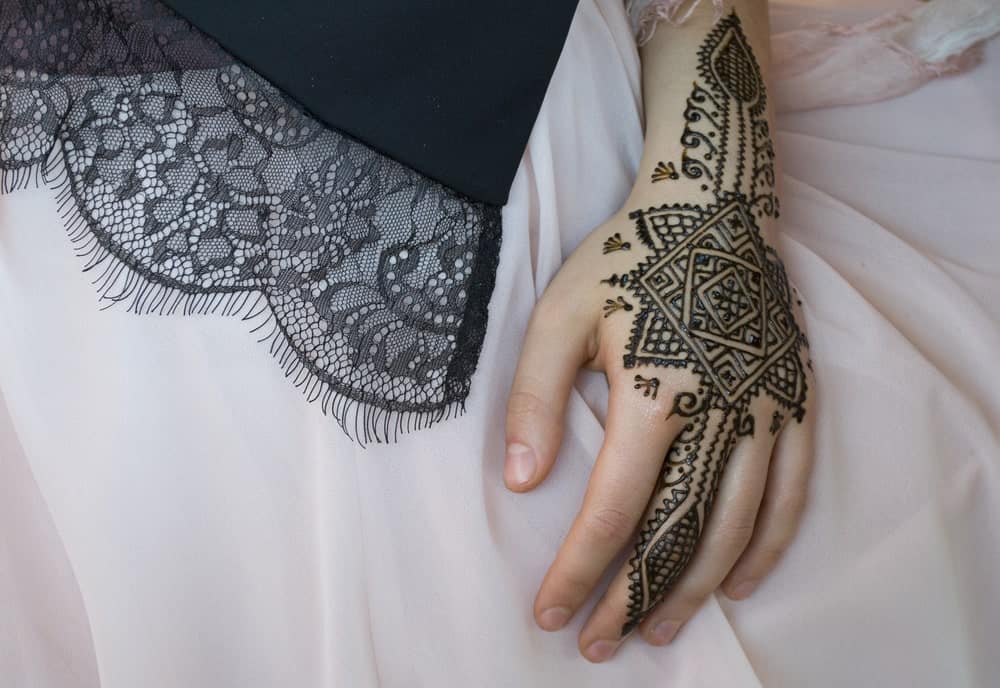
One of the key features of a geometric tattoo is the use of crisp, straight, and accurate lines. These lines must be measured and mapped out well ahead of time to give the overall tattoo’s desired intent. Because of the straight lines involved in this tattoo, this is not a great idea for people to get for their first tattoo. Any little jump or wiggle under the tattoo artist’s watchful eye can create a deviation in the line, altering the overall look and feel for the final tattoo.
The style of this tattoo can range. Some people prefer an exact geometric tattoo that features hard lines with a definitive start and endpoint. These lines do not necessarily need to be thick, but they need to be exact and crisp.
Other people prefer a softer approach with a geometric tattoo, opting for more of a soft and faded effect around the edges. This look is accomplished by using different shading techniques around the edges. The result is still a geometric pattern or tattoo, but it is softer and appears to be painted rather than printed.
The subject of a geometric tattoo can vary. Some people prefer a repeated pattern or design using geometric lines, shapes, and angles. Other people prefer the combination of geometric shapes combined to create an image, such as an animal or a face. Regardless, both tattoo styles are included in the geometric tattoo style and create a stunning, unique tattoo effect.

When getting a geometric tattoo, it is customary to have an all-black ink tattoo. The sharp lines and angles require the big and bold color to really impact a geometric design. If a big bold and black ink tattoo is not right for you, consider the softer geometric tattoo approach that features black and gray shading with different black gradients creating an overall softer look.
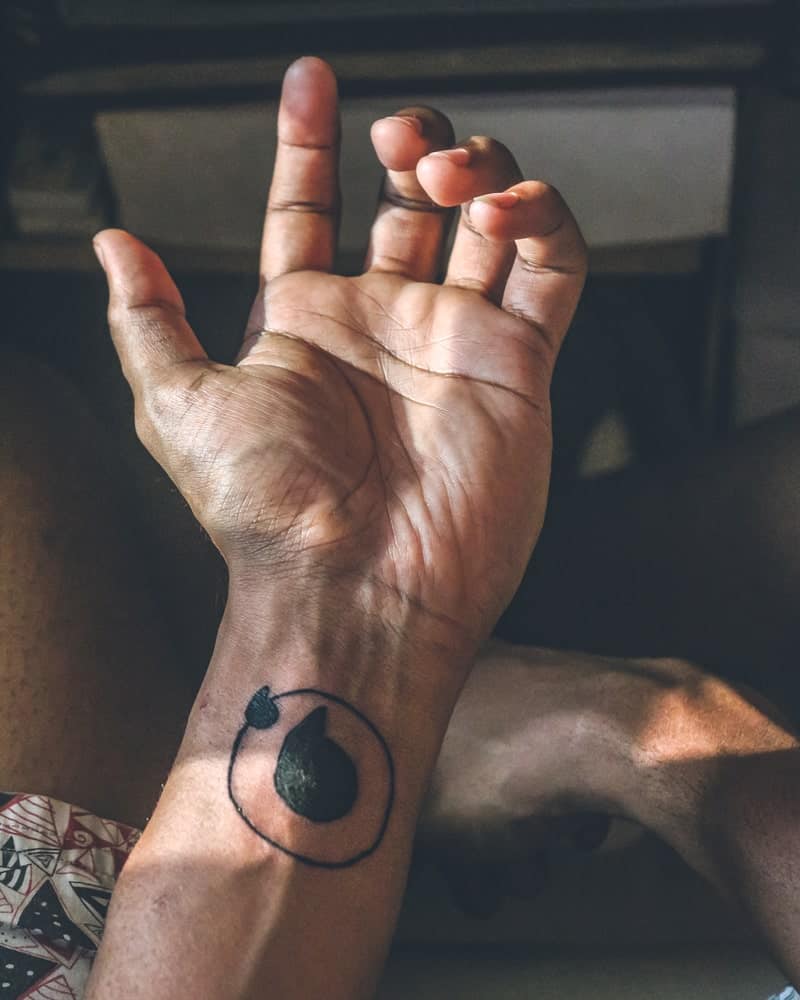
These tattoos can range in size. For some, a small tattoo is perfect with just a simple, repeating pattern. Many people prefer a geometric line or shape as a minimalist tattoo. For others, an entire sleeve or piece to cover the entire back is appropriate.
The simplicity in the straight lines and repeating patterns is a good tattoo that can be made larger or smaller depending on the individual preference. If you choose a repeating pattern for your geometric tattoo, remember that the pattern could always be combined or extended in the future to keep your tattoo connected to a shape or figure.
Watercolor Tattoo
One of the hottest tattoo trends in the past 5 years has been a watercolor tattoo. Like the style of taking watercolors to a canvas, the watercolor tattoo is beautifully colored with free-flowing colors that seemingly flow right into one another. The ending result is a soft, beautiful, and delicate tattoo that is a stark difference from the big and bold traditional tattoos commonly seen.
There are two main styles for this type of tattoo: one with a black base and one that does not. Having a black ink base that gives the tattoo subject shape and definition is a major bonus. It helps to define an otherwise abstract image. The black ink can also give a tattoo dimension and contrast, making the bright and flowing colors stand out and get noticed.

Of course, the black outlines do have a downside too. Some people feel that the harsh black ink outlines can inhibit the free-flowing intent of the watercolor image. The black defines the subject too much and does not allow the color and form to take shape organically.
Comparatively, the other watercolor tattoo style is to not have a black base at all. This means the tattoo is formed solely around the various colors in the tattoo itself. The colors and their shapes form the image, allowing the watercolor to appear natural and organic.

This will certainly give people the desired effect they are looking for, but it also has some downsides. Without a defined shape, the free-flowing and bright colors can start to blend, often becoming a rather abstract tattoo that can be muddied.
Further, there is the thought that without the black to help outline the shapes and define the subject, the colors can appear rather haphazard and out of place. Really, choosing a black outline or no black outline comes down to preference and the way you would like your tattoo to look.
While a watercolor tattoo can have several images and subject matters, common subjects include natural elements. At the top of the list are butterflies, birds, and flowers. These natural subjects work perfectly with the watercolor style, giving a soft, natural, and beautiful appearance.

However, just about any image can be converted to a watercolor style ranging from an animal to a portrait to a cartoon character. These tattoos can come in any size and shape, although it is usually suggested that a larger tattoo size works better, at least 6 inches. This will allow plenty of room for the colors to form and flow into one another seamlessly.
One of the biggest criticisms of this type of tattoo is how long it will last. Of course, a tattoo is intended to last a lifetime, but tattoo ink will begin to fade over time. Because many of these tattoos do not use blackwork, it is difficult to define the piece’s barrier and outline.
Without defined blackwork, the worry is that the tattoo colors will start to run together and fade into one another over time. One way to combat this is to use the watercolor tattoo approach that includes the black outline to define and outline the overall subject and shape.
Text-Based Tattoo
Another popular tattoo that is simple yet profound is a text-based tattoo. These tattoos can be just one simple word or a more extended quote or phrase. The text can come directly from a loved one, a book, a movie, or from a religious text. The text-based tattoo appeals to a wide range of people because it is variable and can be customized for an individual.

When it comes to a text-based tattoo, lettering is essential. Tattoo artists can use many fonts for your lettering. Fonts can range from big and bold print to a feminine and airy script that suits your text and the piece’s overall feel.
Remember that text tattoos do not necessarily have to be done in the Western alphabet, and many text-based tattoos are commonly seen in Kanji, Hanji, Arabic, or Cyrillic. Typically, black ink is used for a text-based tattoo because it will show up the best and stay without much fading. Of course, it is always possible to use another color if you prefer.
Text-based tattoos can come in any size and shape and are often the perfect choice for people who want a micro-tattoo. This type of tattoo can be just one word, taking up about an inch of space on your body. Or, text-based tattoos can be a long quote, sometimes covering a vast area of your body. Text-based tattoos can be stand-alone tattoos or paired in conjunction with a traditional image tattoo, creating a compound tattoo type.
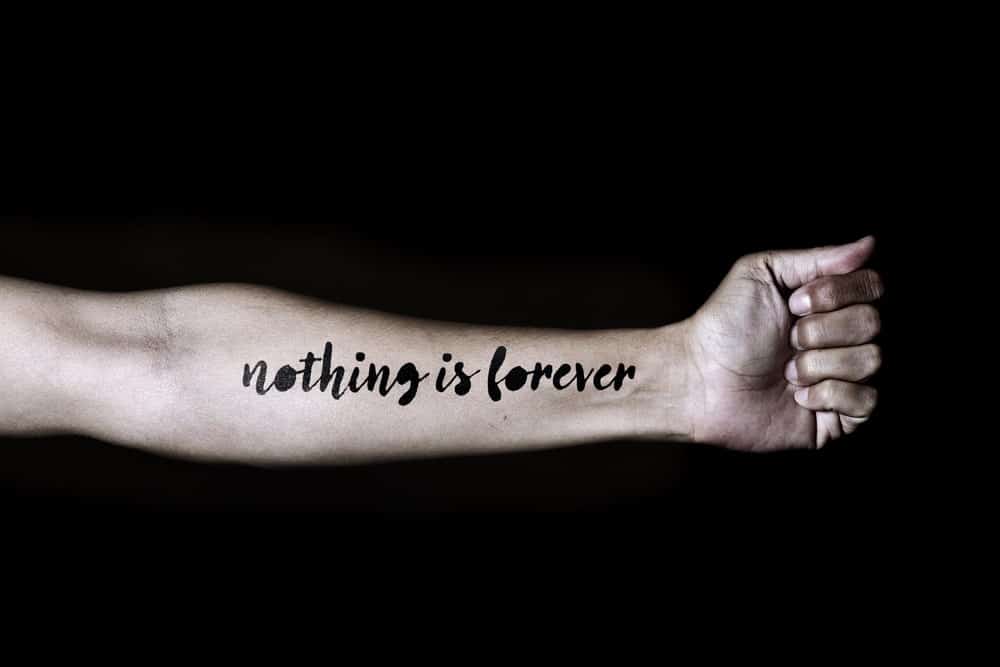
Because of their versatility, text-based tattoos can go just about anywhere on the body. It is common to see text-based tattoos in traditionally hard-to-reach tattoo spaces such as the ankles, wrists, or even the face. Remember, like any tattoo, it is essential to choose an area on the body that can accommodate your tattoo text size.

When getting the tattoo, it is vitally important to sit completely still. Letters and numbers have many straight and intricate lines that must be tattooed straight and clean. Any wiggles or motions can make the lines appear fuzzy or uneven. And of course, when approving the sketch of your tattoo before tattooing it in place permanently, make sure everything is correctly spelled.
Japanese Tattoo
Japanese tattoos are stunning, intricate, and easily recognizable. As one of the most popular tattoo styles, Japanese tattoos continue to gain popularity year after year. Although these tattoos are beautiful and culturally significant, they have recently received a bad reputation because of their perceived connection to a crime.

However, these tattoos have a beauty and meaning that can take a life of their own. These tattoos combine a mixture of cultural importance, with heavy stylistic and exact artwork to create stunning images. Japanese tattoos can be perfect for anyone and can easily work with your existing tattoos, even if they are of a different style.
One highlight of a Japanese tattoo is the exacting and intricate line work. Lines can be thick or thin but are created using black ink. The lines must be straight, clear, and crisp to create the overall effect. Because line work is such an essential component of Japanese tattoos, certain images work better than others.
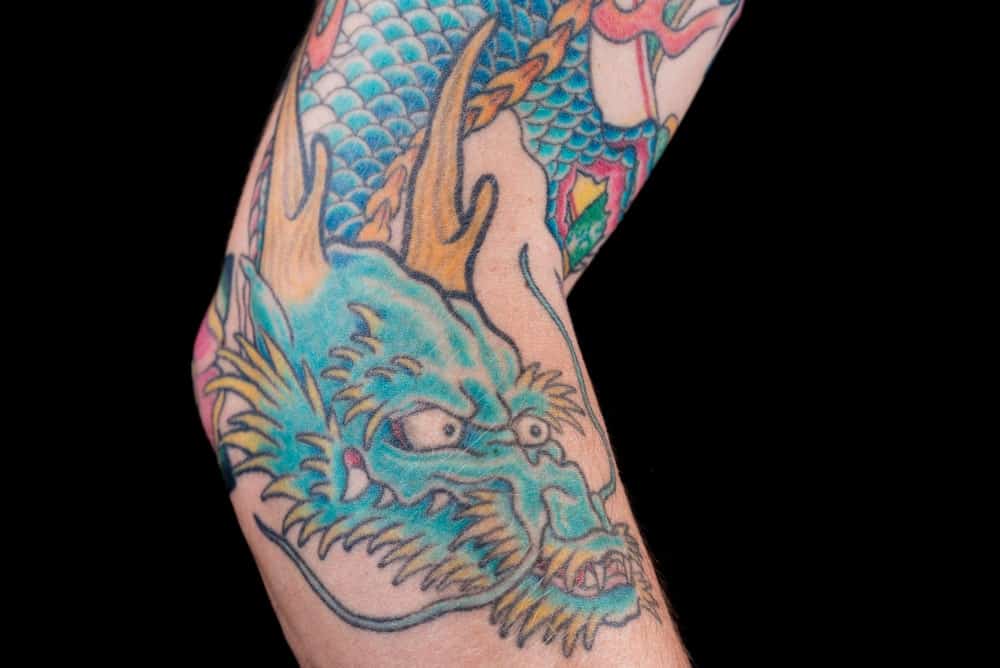
One of the most popular images for a Japanese tattoo is a dragon. Most commonly, dragons are curling and coiled up, with a long tail, detailed face, and grasping talons. The individual scales involved with creating a dragon give the perfect opportunity to create detailed line work.
Another great option for a Japanese tattoo is the koi fish. Culturally significant, a koi fish can carry great meaning and symbolism. The individual scales of a koi fish tattoo give the tattoo artist the perfect opportunity to show off their skill when creating intricate patterns.
In fact, it is common practice to use a repeating fish scale pattern in blackwork to help act as a filler or background pattern for larger tattoo pieces. This is a great way to carry a theme throughout the tattoo while still giving a culturally significant and beautiful application.
The colors used in a Japanese tattoo style are essential. Expect to see a heavy influence with blacks, reds, and whites. Blues, greens, and purples can be added too. With Japanese tattoos, the colors are extremely significant. Each color represents a different part of the story, helping the tattoo artist further paint his or her story into the piece.
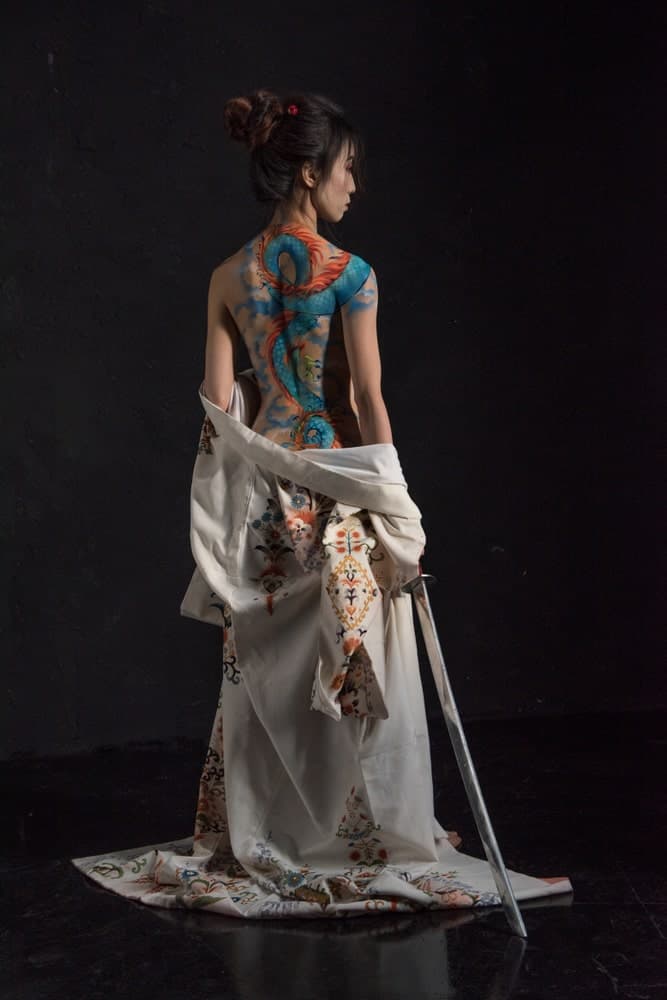
When it comes to Japanese tattoos, bigger is always better. Having a large space for such an intricate piece really allows the tattoo artist to show off their skill. Plus, having a larger space allows the blackwork to flow better, making the tattoo fade and age better.
When intricate lines are placed too close together, it can ultimately create a blurred appearance as the tattoo begins to age. Perfect locations for a Japanese-style tattoo include the back, arms, legs, and ribs. While tattoos like this can work on the hands and feet, it is best to keep designs and colors simple for these applications.
Tribal Tattoo
Tribal tattoos have their roots in most ancient civilizations. Tribal tattoos carry meaning and cultural significance, which can be carried on to the modern world. Traditionally, several cultures used tattoos to help convey a message or carry a larger meaning. This tattoo type can be found in the Aztec, Samoa, India, Hawaii, Maori, or Polynesian cultures.
This tattoo style is a connection of lines and dots. The lines and dots are formed together to create patterns and lines. These patterns can range from being rather simplistic to incredibly complex patterns that rival some of the most complex geometric style tattoos. The dots and lines are usually repeating, extending for the full length and size of the tattoo.

When getting a tribal tattoo, the color used is always black. This straightforward, single-color tattoo conveys more of its beauty with its intricate blackwork than with bold and bright colors. The black is bold and solid and rarely features any black gradients or shading. Black is predominantly used for a Polynesian tattoo or a Maori tattoo.
The size of the tribal tattoo can vary. Some people choose to opt for a tiny and modern tribal tattoo, featuring just one part of the repeated pattern. This is easy to do on a small space like the ankle or wrist. Other people choose to opt for a much larger tribal tattoo, covering the entire arm, back, or shoulder.
The larger space available for the tattoo, the more bold and intricate the pattern can be. When selecting your particular style of tattoo, be sure to consider the placement. Too intricate of a tattoo in too small of a space can cause the ink to blur together, making the tattoo appear cloudy and fuzzy.
Realism Tattoos
Another popular trend in tattoos that alludes to the advancement in technology is realism tattoos. These tattoos are hyper-realistic, often looking like a photograph is simply implanted on the skin. Realism tattoos are a great way to avoid a stylized or traditional tattoo and have a real piece of artwork on your body.
A subset of realism tattoos is a portrait tattoo. This type of tattoo allows a tattoo artist to photograph a person, animal, or place and copy the image onto your body. A tattoo artist works heavily with different shading techniques, expertly working to your body’s contours to recreate the image accurately and flawlessly.

Realism tattoos can come in black and white or in color. Traditional blackwork art and design are required for making a realistic tattoo appear in only monochromatic colors. Often, shades of white ink can be used to add highlight and dimension, making your piece of art appear to be a 3d tattoo. Adding color to this type of tattoo can enhance the realistic appearance, making a beautiful image on your body.
It is important to remember with realism tattoos that the larger space, the better. It can be quite difficult to cram all the necessary details, highlights, and shading into a small tattoo. These tattoos are better for a large space such as the arm, leg, or back to really get the full potential and available detail in the image. Realism tattoos are beautiful but often take several sittings to finish such an amazing piece.
Cosmetic Tattoo

Although not quite the same tattoo as others featured on our list, a cosmetic tattoo still requires the same process as a decorative, traditional tattoo. A cosmetic tattoo is a way for people to use tattoo ink to create the illusion of wearing makeup permanently. A tattoo artist or a practicing aesthetician can perform a cosmetic tattoo with a license for cosmetic tattooing.
Men and women both commonly turn to cosmetic tattoos to help enhance their look. Popular areas for tattoos include adding coloration to the eyebrows for thicker-looking brows, adding permanent coloration on the cheeks or lips, or adding a defined line around the eyes, giving the appearance of wearing eyeliner. Cosmetic tattoos will last for a lifetime. The ever-popular microblading technique that promises fuller, better-defined eyebrows is technically a modified version of cosmetic tattooing.
FAQs
There is no right or wrong answer for tattoos, and often the decision for a particular tattoo comes down to personal style. We understand that if you are new to tattoos, the number of designs and styles available can be overwhelming.
Below, let’s take a closer look at some commonly asked questions surrounding tattoos so that you can become informed and knowledgeable about a decision that will last a lifetime.
What are the different types of tattoo styles?
Just like different types of artwork, there are different types of tattoo styles. What works for one person may not work for another. You may opt for a traditional tattoo that adheres to the style’s confines or opt for a hybrid approach, combining several design elements into one tattoo.
A traditional tattoo style, often in the Americana style, offers what people usually think of when they hear the word “tattoo.” These tattoos are big and bold, with thick outlines and bright colors. The images and symbols are often cartoonish and include a deeper symbolic meaning underneath their simplistic style.
If you want something with more detail, consider a Japanese tattoo or a geometric tattoo. These tattoo styles feature intricate patterns and big, beautiful prints. Geometric tattoos often feature exact lines, which can also be found in Japanese tattoos.
This tattoo style is great for people interested in traditional motifs such as dragons and koi fish. Most geometric tattoos with intricate designs work better on large spaces, such as the arms, legs, or back.
Still, if you are looking for something different that can really turn heads, consider a realistic tattoo. These can be in either color or black and feature a realistic image. You must have a large space to put this type of tattoo and expect to spend multiple trips at the tattoo parlor to complete the final image.
What is the process of getting a tattoo like?
Getting a tattoo should not be a rash decision, and a great deal of thought should go into getting something that will be on your body for a lifetime. The first step to getting a tattoo is thoroughly considering the placement and subject of your tattoo. People will often work together with an artist and go through several versions of the tattoo to find just the right image.
Next, you will go to the tattoo parlor. The area where you want the tattoo to go will have to be accessible to your artist. Be sure to wear appropriate clothing. Your artist will have his or her station already set up and sanitized, expecting your arrival.
Your artist will thoroughly wash, cleanse, and sanitize the area for your tattoo. Using transfer paper, the artist will place a rough image, or outline, of your tattoo into place. This gives the artist a sketch and outline to follow.
Now the tattooing process can begin. The tattoo artist will start with the outline, using a dark, black line. Depending on the tattoo type and style, the artist will next go in and fill in with the right colors. Next, shading and highlights will be added until the tattoo is complete. The finished tattoo will be washed and protected.
Expect your tattoo artist to give you instructions to care for your tattoo at home properly. This includes using a mild soap to keep the area clean and prevent infection. Special lotion and moisturizer should keep the tattoo soft while it goes through the healing process. Your tattoo artist will also recommend using a special sunblock if exposed to the sunlight to prevent your tattoo from fading.
Should you be tipping your tattoo artist?
Your tattoo artist is not only providing a service but is sharing his or her artistic ability with you in something you will keep forever. It is a best practice to tip your tattoo artist. The amount you tip should depend on the size, time commitment, and final satisfaction with your new tattoo.
Where do tattoos hurt the most?
Getting a tattoo involves repeatedly poking your skin with a very fine needle, inserting ink under the skin. This is effectively getting several small shots or puncture wounds over your body. It is important to remember that all tattoos will have some pain element, but some areas of the body are more sensitive to others.
Some of the body’s most sensitive areas include the ribcage, face, hands, and top of the feet. Getting a tattoo in these areas will hurt the most. These areas are not suggested for people getting their first tattoo because there is a tendency to move and wiggle, which could impact your tattoo outcome.
The back, arms, and legs (mostly) are areas of the body that traditionally are not as sensitive. These areas have fewer pain receptors close to the surface, making them ideal for a tattoo. Plus, these areas of the body are larger, making them great for large-sized tattoos with plenty of detail.
The type of tattoo you get will also impact the amount of pain you feel. Simple black lines use a tattoo machine that only has one needle. Shading and color traditionally use multiple needles in the machine, creating a different type of sensation. The more color and more shading you include in your tattoo, the more amount of pain you can expect to feel.
If you are concerned with the level of pain, be sure to talk to your tattoo artist ahead of time. Many tattoo artists have different breathing and coping mechanisms to help you minimize the pain. Sometimes talking, telling stories, or listening to music while you are being tattooed can distract you from the pain, allowing you to complete your tattoo.


